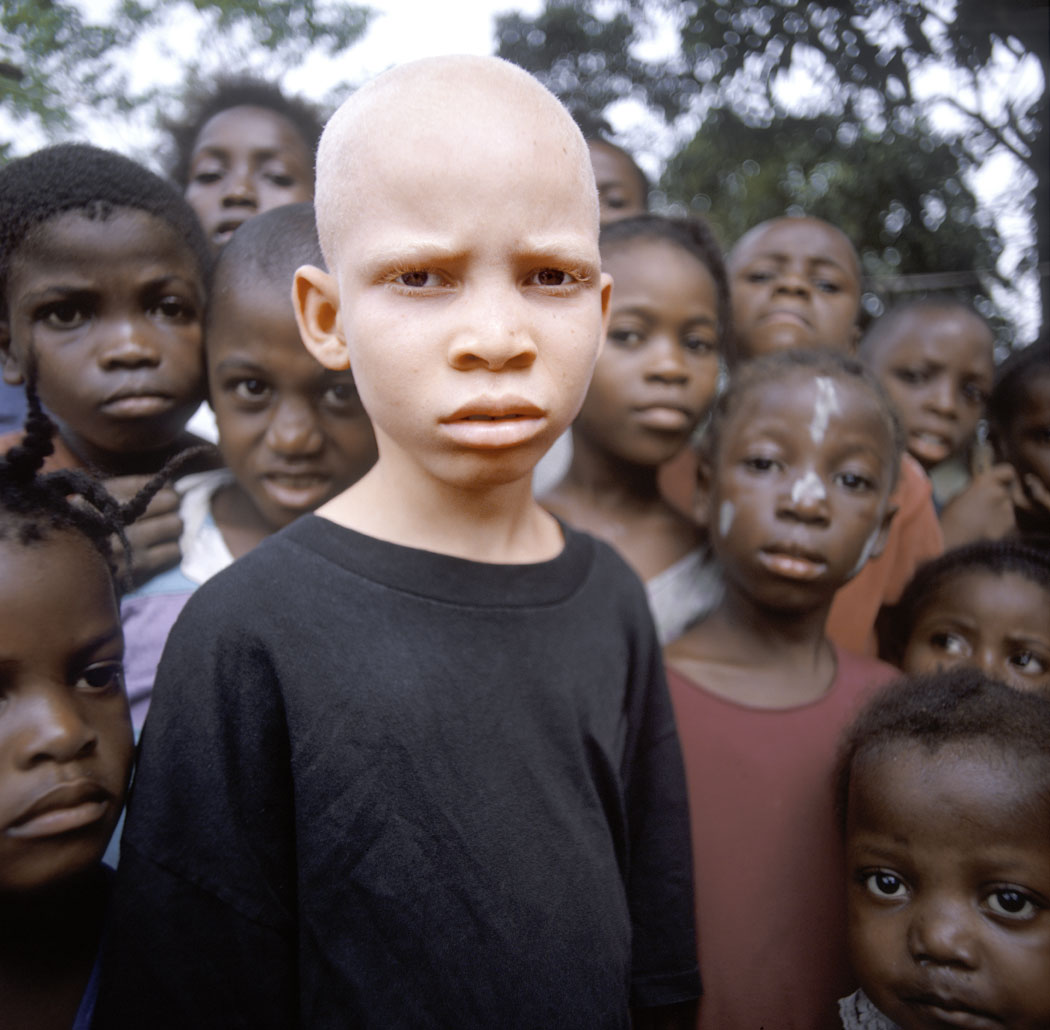OCA

Description: A young African American boy with albinism.
Image copyright: http://icepfund.org/Photos/Edge_of_the_world/Liberia/Albino-group-l.jpg
Albinism is a genetic disorder that causes the person to look washed out or lacking color. This is caused by a very small amount of a chemical called melanin. Melanin is a chemical in our bodies that produces pigment in our skin and that also helps to prevent sun damage when we are in the sun for too long. There are ten different types of Albinism. Ocular Albinism is one of the most common types seen in humans and most often affects the male. Albinism was discovered in 1908 by a scientist named Archibald Garrod. Albinism affects both men and women as well as animals too, and is common for all races and ethnicities. Albinism is not a common disorder usually seen. Only one and every 17,000 people are born with a type of Albinism. There are only about 18,000 people recorded in the United States that have and are affected by Albinism.
Problems with Albinism:
There are several ways to find out if a person has Albinism. Their skin is very light and fair, their eyes are usually a very sheen light blue or tinted red from the lack of melanin that produces pigment in their skin. They also have extreme blonde hair that can sometimes look white in certain lighting, this is also caused from the lack of melanin in their body. Some ways to tell a person has albinism is if they have a hard time reading or seeing things clearly or if their skin is easily irritated by the sun or harsh lights.
There are some problems associated with this disorder. As I stated earlier, their body does not produce enough of the chemical melanin, to give themselves enough pigment to help prevent damage from the sun. Because they have such a low pigment in their skin, later in life they have a high chance of being diagnosed with skin cancer. The sun and harsh lights not only damages their skin but also their eyes. People with Albinism have extremely sheen blue eyes and sometimes red because of the low level of melanin in their blood. The sun can easily damage their sight and cause slight blindness later in life if they do not protect themselves from the suns rays. Since their eyes are so sensitive to light, people with albinism often squint and can also have lazy or crossed eyes. Everyone with albinism also occasionally experience abnormal flickering eye movements called nystagmus.
Genetics of Albinism:
Albinism is not contagious and can not be passed on to another person simply by breathing on someone or having blood transferred to another person. To get albinism, the child when being conceived, inherits an albinism gene from each parent. Therefore the child has two albinism genes in them, instead of one regular gene and one albinism gene. Both of the albinism genes that have been passed onto the child are incorrect for making the right amount of pigment for the childís body. Not having enough pigment is the result of their appearance.
There is not a specific gender that passes down this genetic disorder. Most often or not the parent has no appearance or way of showing they may have an albinism gene in them. Only one in every 70 people carry at least one gene to cause albinism in future conception. It is very uncommon for a parent to have albinism and then conceive a child that has the disorder too. The parents are just like everyone else, brown hair, blue eyes, plenty of pigment, ect. The albinism gene is a recessive gene.
Treatment:
There are several methods used to relieve the symptoms of albinism. For example, people with albinism can get tinted sunglasses to help prevent future damage to their eyes. Also they can get tinted contacts for their eyes to help them see better if they are having sight problems. The tinted contacts will also help to prevent eye damage from the sun.
To try and comfort patients with albinism you simply need to not make them feel different or exclude or make fun of the person. Even though they may look a little different doesnít mean they are any different from anyone else. They are beautiful in Godís eyes as they should be in ours too. There is no cure for albinism. Children are simply born with it and it is a defect in the pigment that causes the skin to be more pale and sensitive to sunlight.
Prevention:
There is no medication or special treatment that can be taken in order to prevent albinism. You can go to a genetic counselor to see if any of your genes show signs of albinism. This way you can see if there is a possible chance that you will have a child later in life with albinism.
